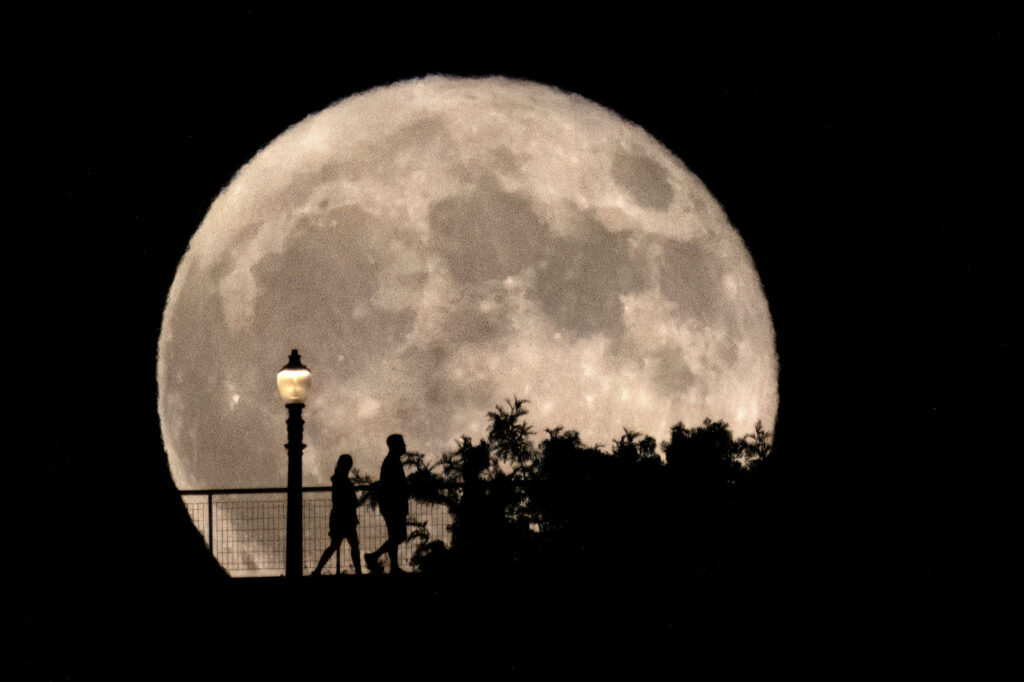Earth to get a temporary ‘second Moon’ for two months

People walk in front of a rising supermoon at Griffith Observatory in Los Angeles, Monday, Aug. 19, 2024. (AP Photo/Richard Vogel)
On September 29, 2024, the Earth will have a temporary “second Moon” for two months as an asteroid called 2024 PT5, discovered by NASA on August 7, 2024, is expected to pass by.
This marks a truly out-of-this-world phenomenon.
It originated from the Arjuna asteroid belt, where it will likely return once it leaves the planet’s orbit on November 25, 2024.
READ: NASA explains global asteroid alerts
Many outlets call it a “second Moon” because it will orbit the Earth. However, the asteroid is only 33 feet or 10 meters wide, making it difficult to see with the naked eye.
Why will the Earth get a ‘second Moon?’
A study from the American Astronomical Society explains this rare phenomenon:
“Earth can regularly capture asteroids from the Near-Earth object (NEO) population and pull them into orbit, making them mini-moons.”
NASA says a Near-Earth Object is any object that draws into the planet due to gravitational attraction.
Research lead author and Universidad Complutense de Madrid professor Carlos de la Fuente Marcos shares more information about the “second Moon.”
“Objects in the Arjuna asteroid belt are part of the near-Earth object population of asteroids and comets.”
“Under these conditions, the geocentric energy of the object may grow negative, and the object may become a temporary moon of Earth. This particular object will undergo this process starting next week and for about two months,” he added.
Marcos categorizes mini-moon events into two. The first includes asteroids that complete one or more revolutions around the Earth, lasting a year or more.
On the other hand, the second type does not complete one revolution, lasting only days, weeks, and, in the case of 2024 PT5, only months.
As mentioned, most won’t see it in the sky due to its size and dimness. Marcos also explained that he and his colleagues would study the “second Moon” further.
ScienceAlert says it will return on November 8, 2055.
Disclaimer: The comments uploaded on this site do not necessarily represent or reflect the views of management and owner of Cebudailynews. We reserve the right to exclude comments that we deem to be inconsistent with our editorial standards.
